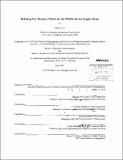| dc.contributor.advisor | Vahram Erdekian and Vincent W.S. Chan. | en_US |
| dc.contributor.author | Xu, Ethan Y | en_US |
| dc.contributor.other | Leaders for Global Operations Program. | en_US |
| dc.date.accessioned | 2012-09-27T15:30:06Z | |
| dc.date.available | 2012-09-27T15:30:06Z | |
| dc.date.copyright | 2012 | en_US |
| dc.date.issued | 2012 | en_US |
| dc.identifier.uri | http://hdl.handle.net/1721.1/73408 | |
| dc.description | Thesis (M.B.A.)--Massachusetts Institute of Technology, Sloan School of Management; and, (S.M.)--Massachusetts Institute of Technology, Dept. of Electrical Engineering and Computer Science; in conjunction with the Leaders for Global Operations Program at MIT, 2012. | en_US |
| dc.description | Cataloged from PDF version of thesis. | en_US |
| dc.description | Includes bibliographical references (p. [104]). | en_US |
| dc.description.abstract | Mobile device companies typically manage supply and pricing for components that are used in production by their Vertical Integrators (VIs). By controlling the component pricing and supply chain, mobile device companies are able to increase their pricing and supply chain leverage over smaller component suppliers. Maintaining this leverage is crucial in ensuring that mobile device companies can mass-produce high quality products at efficient costs. However these advantages require that companies incur additional operational expenses associated with supply chain management. To reduce costs and improve lead times, OEM companies should consider having 1st Tier suppliers directly manage 2 nd Tier suppliers. This project will investigate VI capabilities to manage quality, design, and cost across the entire range of hardware used in Nokia phones. Alternatively, we will also identify specific program and commodity areas which may benefit from having a more integrated supply chain. We will also investigate how Nokia can reduce supply chain management costs to meet future business needs related to cash flow.' By analyzing Nokia's historical supply chain performance, we will develop a model to quantify Nokia's "level of control" over its supply chain. We define this "level of control" in terms of the Operational Expenses and Investment which Nokia incurs in managing its supply chain. With this model, we will assess how future business constraints will affect Nokia's supply chain control. By evaluating key parameters which influence supply chain control, we can recommend how Nokia can allocate control across its supply chain. Finally, we will apply this model to recommend how Nokia should outsource supply chain management responsibility. | en_US |
| dc.description.statementofresponsibility | by Ethan Y. Xu. | en_US |
| dc.format.extent | 103, [1] p. | en_US |
| dc.language.iso | eng | en_US |
| dc.publisher | Massachusetts Institute of Technology | en_US |
| dc.rights | M.I.T. theses are protected by
copyright. They may be viewed from this source for any purpose, but
reproduction or distribution in any format is prohibited without written
permission. See provided URL for inquiries about permission. | en_US |
| dc.rights.uri | http://dspace.mit.edu/handle/1721.1/7582 | en_US |
| dc.subject | Sloan School of Management. | en_US |
| dc.subject | Electrical Engineering and Computer Science. | en_US |
| dc.subject | Leaders for Global Operations Program. | en_US |
| dc.title | Defining new business models for the mobile device supply chain | en_US |
| dc.type | Thesis | en_US |
| dc.description.degree | S.M. | en_US |
| dc.description.degree | M.B.A. | en_US |
| dc.contributor.department | Leaders for Global Operations Program at MIT | en_US |
| dc.contributor.department | Massachusetts Institute of Technology. Department of Electrical Engineering and Computer Science | |
| dc.contributor.department | Sloan School of Management | |
| dc.identifier.oclc | 810159111 | en_US |
